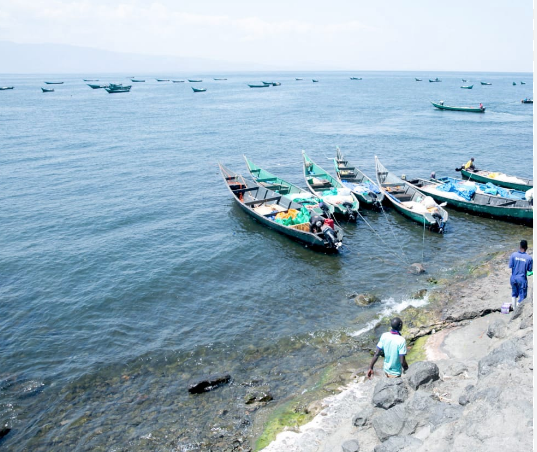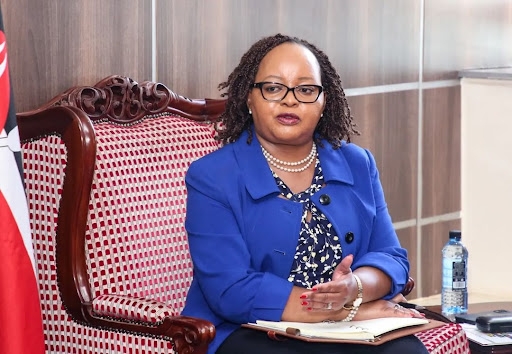
Homa Bay county, nestled along the scenic shores of Lake Victoria, stands out as a beacon of progress and potential in Kenya’s western frontier.
Christened the county of endless potential, Homa Bay is known for its breathtaking landscapes and rich biodiversity and is home to 16 islands, including Rusinga and Mfangano.
Beyond its natural beauty, the county serves as a hub for fishing, agriculture and regional trade, offering significant economic opportunities through its strategic location near Tanzania and Uganda.
Under the stewardship of Governor Gladys Wanga, Homa Bay is witnessing transformative development aimed at unlocking its vast potential.
One of the flagship initiatives driving this transformation is modernisation of Koginga Beach Fish Market.
This state-of-the-art facility, a partnership between the national and county governments, is poised to revolutionise the fishing industry with cold storage units, processing plants and clean, dignified spaces for fishmongers.
By addressing issues such as middlemen exploitation and post-harvest losses, the new market promises better livelihoods for fishmongers and greater economic efficiency.
“As fishermen, we faced a lot of challenges because there was no market and the fish would go bad,” said a local fisherman.
With the new market, fishmongers now have a reliable space to sell their products without fear of spoilage or unfair pricing.
Education remains a cornerstone of Homa Bay's growth. The Fins to Swim Scholarship programme has already provided 480 students with financial support, including school fees, shopping and pocket money, ensuring financial constraints do not hinder academic progress for bright but needy students.
Efforts to improve early childhood education have also been prioritised, with the replacement of dilapidated iron-sheet classrooms with permanent, decent facilities. Wanga’s administration has built more than 160 classrooms across the county, with plans to complete 240 by the end of the year.
“Fins to Swim helped me take my son to school when I could not afford ,” said a parent.
A student beneficiary added, “This project by the governor has encouraged me to work hard to go to the university.”
Infrastructure development is another critical focus area.
Through the Kenya Informal Settlement Improvement Program (KISIP 2), funded by the World Bank, informal settlements are being upgraded with tarmacked roads, street lighting and improved water and sanitation facilities.
Additionally, the County Aggregated Industrial Park (CAIP) is set to empower local entrepreneurs by providing resources for processing agricultural and fish products, further driving industrial growth and job creation.
“The main goal is to develop settlements for the people and to remove the infrastructure that people cannot reside in,” said a county official involved in the programme.
Agriculture, the backbone of Homa Bay’s economy, is being revitalised through targeted investments in key value chains such as cotton, edible oils and fish farming.
More than 37,000 farmers have been registered under the county’s cotton programme, which provides seeds, fertilisers and pesticides.
Partnerships with private sector players seek to establish processing plants, adding value to local produce and boosting incomes. Similar initiatives in sunflower farming and aquaculture are creating new economic opportunities for residents.
Healthcare in the county has undergone a significant transformation, with new facilities such as the Rachuonyo East Sub-County Hospital and the upgrade of the county referral hospital to Level 5.
These developments have brought advanced services, including dialysis, CT and MRI scans and improved maternal care, to residents who previously lacked access to such facilities.
Efforts to address water challenges have also borne fruit, with more than 66 boreholes drilled in collaboration with the African Development Bank, ensuring access to clean water for homes, schools and hospitals.
Sports and recreation have not been left behind, with the revamping of the Raila Odinga Homa Bay Stadium.
The upgraded facility has become a hub for local and national tournaments, promoting youth talent and fostering community engagement.
Wanga’s administration has also emphasised public participation and governance, revitalising community forums to ensure residents are actively involved in the decision-making processes.
She says she envisions a brighter future for Homa Bay.
Her plans include a lakefront revitalisation programme and the creation of a Governor’s Park for public relaxation, aimed at enhancing the county’s tourism and recreational appeal.
Committed to financial empowerment and sustainable development, she is determined to transform the lives of Homa Bay residents, laying a foundation that will benefit future generations.
Her legacy is not just in the projects initiated but in the tangible improvements in the lives of people.











